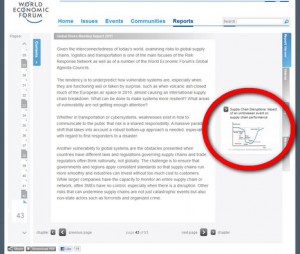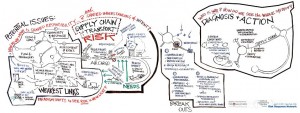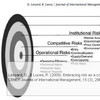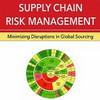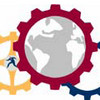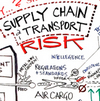 We are living in a new world of risk that is making this world unprecedentedly complex and challenging for corporations, institutions and states alike. Supply chains are no exception, and in our quest for greater efficiency and greater choice, are we really developing robust global transport networks or simply building a house of cards? That is what the Supply Chain and Transport Risk Initiative, nested within the Risk Response Network (RRN) of the World Economic Forum is trying to answer. The aim is to develop better international risk management mechanisms and improved crisis response across the public and private sectors to deal with the major risk of disruption in transport and supply chains. This post takes a closer look at this initiative and what it is up to.
We are living in a new world of risk that is making this world unprecedentedly complex and challenging for corporations, institutions and states alike. Supply chains are no exception, and in our quest for greater efficiency and greater choice, are we really developing robust global transport networks or simply building a house of cards? That is what the Supply Chain and Transport Risk Initiative, nested within the Risk Response Network (RRN) of the World Economic Forum is trying to answer. The aim is to develop better international risk management mechanisms and improved crisis response across the public and private sectors to deal with the major risk of disruption in transport and supply chains. This post takes a closer look at this initiative and what it is up to.
My point of view
The reason why I came across this initiative is that I was invited to contribute to it, by sharing my thoughts and insights about what I think are most pressing issues in supply chain risk management. In particular I was asked regarding systemic exogenous supply chain risks, their distribution (whether they are acute and concentrated or dispersed and pervasive) and their current state (whether these are emerging or constant risks).
One of the most pressing issues that I see is the consolidation of third party logistics providers (3PLs). As more and more supply chains span the globe, many of them are operated by the same 3PL, using the same equipment or carrier for many supply chains.
If there is a disruption it will only affect one supply chain, but many, and the affected companies will all scramble to find alternative sources, and whoever is the fastest will win, as Nokia did over Ericsson in 2000. The 3PL may also have to prioritize which affected customer that should receive the most help, and probably whoever pays the most will receive the most help here.
The point is that 3PLs have become increasingly important in not only “orchestrating supply chains“, as Zacharia et al. write, they are also orchestrating the risk management of supply chains.
The Supply Chain and Transport Risk Initiative
The reason for establishing the initiative is best explained in their one-page flier:
In our physically and virtually interconnected world, the risk of systemic supply chain and transport disruptions is becoming ever more acute, affecting economic, security and geopolitical interests. The global economy has been built on the free movement and circulation of goods, components and labour.
Vast transportation networks have developed, spanning the globe, while inefficiencies, delays and slack have been eliminated in pursuit of lower cost margins and ever-more efficient supply networks.
But where do we draw the line? In our quest for greater efficiency and greater choice, are we developing robust global transport networks or building a house of cards?
The aim of the initiative is to bring together a range of leading experts from across WEF’s diverse communities to explore the most critical threats facing supply chain and transport networks and to apply new risk response tools that can promote efficient risk management, security and resiliency in our complex global trading environment.
I feel honored and privileged that I was given the opportunity to contribute, although not in a direct meeting with said experts (that would have been something), and only by phone interview with some of the key staff of the project, but nonetheless, I see it as a stamp of quality to the work I have laid down in creating this blog, and for that I am thankful.
Global Risks Meeting
The World Economic Forum’s Risk Response Network (RRN) was launched in Davos in January 2011 to bring together the world’s experts in managing risk from all sectors of society. Just three months later, the inaugural Global Risks Meeting in New York on 6 and 7 April gathered over 80 decision-makers and experts to figure out ways to better manage, respond to, prepare for and capture opportunities associated to global risks.
When reading the online report from the meeting, in particular the chapter on supply chains, my attention was immediately drawn to a figure on page 43 that looked oddly familiar:
Yes, if you are an observant reader of this blog, it is the figure I used in my post on Sheffi’s disruption profile that he used in his book on The Resilient Enterprise. Actually, from the way it is set up, I can see that the figure in the report is taken from a slide in my 2008 lecture on supply chain risk. Well, I cannot claim to be the owner of the figure, as it was drawn by Sheffi originally, but it is nice to see that my adaptation was used. This makes me wonder…did they perhaps use more of my slides at that meeting? I guess I will never know…
Supply Chain Dependencies
The chapter on supply chains is highly recommended reading for anyone interested in supply chain risk. These are the issues that the world’s leading decision-makers and experts are concerned about:
The tendency is to underpredict how vulnerable systems are, especially when they are functioning well or taken by surprise, such as when volcanic ash closed much of the European air space in 2010, almost causing an international supply chain breakdown.
Whether in transportation or cybersystems, weaknesses exist in how to communicate to the public that risk is a shared responsibility. A massive paradigm shift that takes into account a robust bottom-up approach is needed, especially with regard to first responders to a disaster.
Another vulnerability to global systems are the obstacles presented when countries have different laws and regulations governing supply chains and trade; regulators often think nationally, not globally. The challenge is to ensure that governments and regions apply consistent standards so that supply chains run more smoothly and industries can invest without too much cost to customers.
While larger companies have the capacity to monitor an entire supply chain or network, often SMEs have no control, especially when there is a disruption.
Other risks that can undermine supply chains are not just catastrophic events but also non-state actors such as terrorists and organized crime.
I think they are on the right track, and this is indeed a highly commendable follow-up of the Global Risk Report 2008, where supply chain vulnerability was highlighted as an important and perhaps invisible global risk that should no go unattended.
Supply Chain and Transport Risk Issues
What I found most delightful was that the report from the Global Risks Meeting features “scribes” of the discussions from the meeting session. I think the supply chain and transport scribe is very illustrative, don’t you?
Perhaps not the easiest scribe to follow if you weren’t there, but it works, and brings together all the issues mentioned above. Maybe I should use this figure in my supply chain risk lecture for 2011 and spend the whole three hours dissecting all its details? Unfortunately my students will probably have a lot less to say about the figure than the experts at the meeting, but you never know…
Recommended reading
In conclusion, the website of the Supply Chain and Transport Risk Initiative, along with the Risk Response Network, and especially the report from Global Risks Meeting should absolutely be on your reading list, without any doubt. That said, what do you think supply chain experts and decision-makers should focus on in terms of risk?
Related links
- weforum.org: Supply Chain and Transport Risk Initiative
- weforum.org: Risk Response Network
- weforum.org: Global Risks Meeting Report 2011
- weforum.org: Global Risks
Related posts
- husdal.com: Future Value Chain Trends 2020
- husdal.com: Supply chain risk – an invisible global risk?

